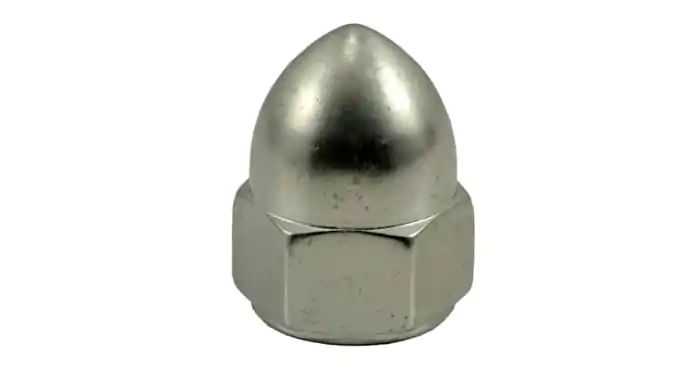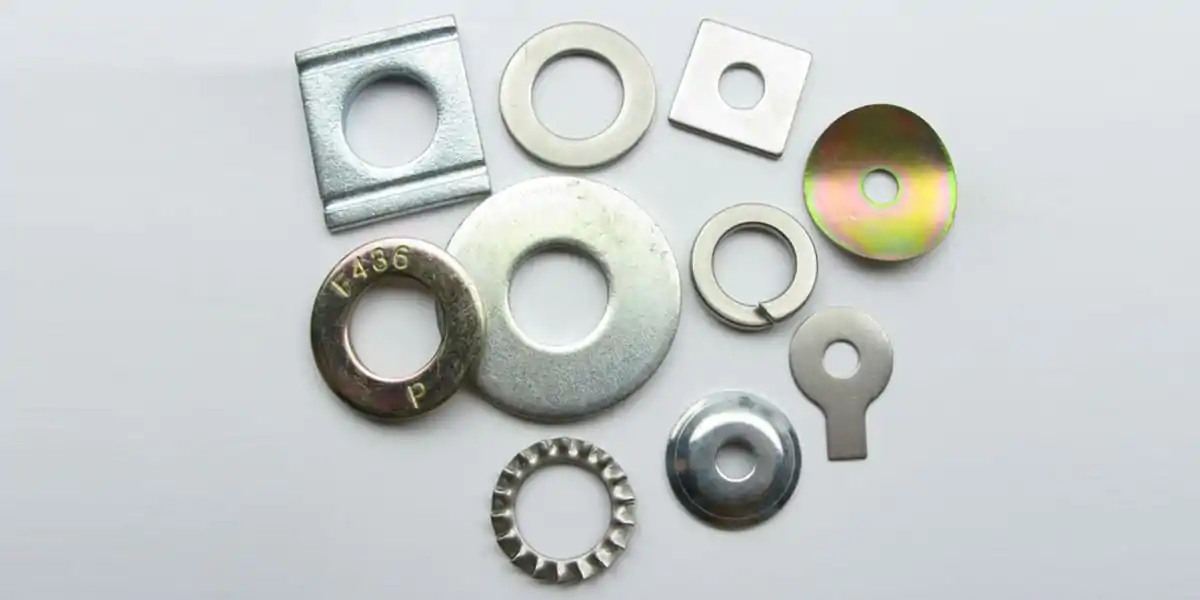Exposed threads on bolts and screws can cause damage, corrosion, and even safety hazards. If you’re looking for a solution that enhances both functionality and appearance, cap nuts are the answer. As an expert in the fastener industry, I can assure you that these simple components offer significant benefits. Let’s dive into how cap nuts work and why they’re essential for many applications.
What is a Cap Nut?
A cap nut, also known as an acorn nut or dome nut, is a fastener designed to cover the exposed threads of a bolt or screw. Picture it as a protective shield that wraps around the sharp edges of a bolt. Its most notable feature is its closed, dome-like top, which helps protect the thread from damage while giving the entire assembly a neat, finished appearance.
The design of cap nuts is simple yet effective. The rounded dome not only protects the threads from corrosion but also prevents accidental injuries caused by sharp threads. You’ll often see these used in both industrial and consumer products, where appearance and safety matter equally.

What is the Purpose of a Cap Nut?
Cap nuts are far from just decorative. They serve practical purposes that make them indispensable in various applications.
Thread Protection
A key function of a cap nut is to protect the exposed threads of a bolt or screw. By covering the threads, cap nuts help keep dirt, moisture, and other harmful elements away. This prevents damage that could weaken the connection and cause the fastener to fail over time.
Aesthetic Appeal
Cap nuts are often used where a clean, polished finish is desired. Think of furniture, machinery, or even automotive parts. Their smooth, rounded look improves the overall appearance, creating a professional, neat finish that shows attention to detail.
Safety Considerations
Safety is key. Cap nuts cover sharp threads, preventing any exposed edges that could be dangerous. In workplaces or around machinery, this extra protection reduces the risk of injury. Workers handling equipment will appreciate the smooth, safe finish that cap nuts provide.
Vibration Resistance
Some specialized cap nuts are designed to resist vibration. This feature makes them ideal for industries where movement and shaking are common, like in automotive, machinery, or wind energy applications. By preventing the nut from loosening over time, cap nuts contribute to the overall stability of the structure.
What are the different types of cap nuts?
Cap nuts come in different shapes and sizes. Let’s take a look at some of the most common types you might encounter.
Standard Cap Nuts
Standard cap nuts have a simple dome shape, which serves to cover the end of a bolt or screw. They are the most common type, designed to protect threads and offer a smooth finish. These are typically used in general applications where thread protection and aesthetics are needed.
Acorn Nuts
Also known as crown hex nuts or domed cap nuts, acorn nuts feature a rounded top that resembles an acorn. These nuts are typically used for aesthetic purposes in applications where a sleek, polished appearance is necessary. Available in both standard and high crown versions, the high crown version is perfect for longer studs, providing extra protection.

Low Crown Cap Nuts
Low crown cap nuts have a shorter profile compared to standard ones. These are ideal for applications where space is limited but thread protection is still required. They maintain a low profile while ensuring that the bolt’s threads are covered and protected.

High Crown Cap Nuts
For longer bolts, high crown cap nuts are used. Their taller profile ensures that they provide more coverage, offering better protection against external elements like dust, moisture, and corrosion.

Push-On Cap Nuts
Push-on cap nuts are made from materials like aluminum and are designed for easy installation. These nuts can be simply pressed onto the bolt or stud without the need for tools. Often used in applications requiring quick assembly, they also allow for decorative finishes, like painting or anodizing.

What materials are cap nuts made from?
The material of a cap nut plays a significant role in determining its durability, resistance, and appearance. Let’s break down the most common materials used to manufacture cap nuts.
Steel
Steel is the most widely used material for cap nuts due to its strength and durability. Standard carbon steel cap nuts can be coated with finishes like zinc plating to improve their corrosion resistance, making them suitable for general-purpose applications in construction and automotive industries.
Stainless Steel
If you’re working in environments exposed to moisture or chemicals, stainless steel cap nuts are a great choice. These nuts offer superior corrosion resistance and are ideal for outdoor or marine applications. They are available in both one-piece and two-piece designs and come with polished finishes for added aesthetic appeal.
Brass
Brass cap nuts have a distinct, golden appearance that adds a decorative touch. These nuts are also corrosion-resistant, though they are typically used in electrical connections, plumbing fixtures, or decorative applications. Due to their non-magnetic properties, brass cap nuts are often preferred in sensitive electrical environments.
Aluminum
For lightweight and corrosion-resistant options, aluminum cap nuts are an excellent choice. These nuts can be painted or anodized for decorative purposes and are easy to install. Aluminum cap nuts are commonly used in the automotive industry and other lightweight structural applications.
Plastic
Plastic cap nuts are a good alternative for non-corrosive applications. They are especially useful in environments where metal fasteners may corrode. Plastic cap nuts are lightweight and cost-effective, making them ideal for electrical insulation and other non-metallic applications.
How to Install Cap Nuts?
Installing a cap nut is relatively simple. Here’s a step-by-step guide on how to do it.
- Align the Nut: Place the cap nut over the exposed end of the bolt or stud. Make sure it aligns properly so that it sits securely on top.
- Use a Cap Nut Tool: If you have a cap nut tool, position it over the cap nut and apply gentle pressure to press it into place. The tool helps distribute force evenly, making the installation process smoother.
- Manual Installation: No tool? No problem! You can gently tap the cap nut into place using a hammer. Just be sure not to hit it too hard, as that could damage the nut or the bolt.
How to Remove Push-On Cap Nuts?
Removing a push-on cap nut requires a bit more effort, but it’s manageable. Follow these steps:
- Grip the Nut: Use vise grips to clamp onto the push nut. Position the grips so they cover the tabs of the nut. Avoid gripping directly over the tabs, as this could make removal difficult.
- Test the Grip: Gently tighten the vise grips until they hold the cap nut firmly. Test the grip by attempting to wiggle the nut back and forth. Tighten slightly more if necessary.
- Pry Off the Nut: With the vise grips in place, insert a flat-head screwdriver behind the flange of the cap nut. Gently pry the nut while continuing to wiggle it with the vise grips. This should help you remove the nut without causing significant damage.
Cap Nut vs. Dome Nut: What’s the Difference?
Cap nuts and dome nuts are often used interchangeably, but there are subtle differences.
- Cap Nut: A cap nut features a smooth dome that covers the exposed threads of a bolt. It provides a finished appearance while protecting the threads from damage and sharp edges. Cap nuts are sometimes called acorn nuts or domed cap nuts, depending on their shape and application.
- Dome Nut: Dome nuts are essentially another name for cap nuts. The term emphasizes the rounded, domed shape. Both serve the same purpose: covering the bolt and protecting the threads, but “dome nut” usually refers to a specific design that offers more coverage.
Conclusion
Cap nuts may be small, but they play a big role. They protect threads, improve the look of your project, and increase safety. Whether you need them for machinery, furniture, or automotive use, cap nuts are a must-have.
If you want to get more detailed insights into bolts and fasteners, feel free to reach out to me directly at info@hrfastener.com.









